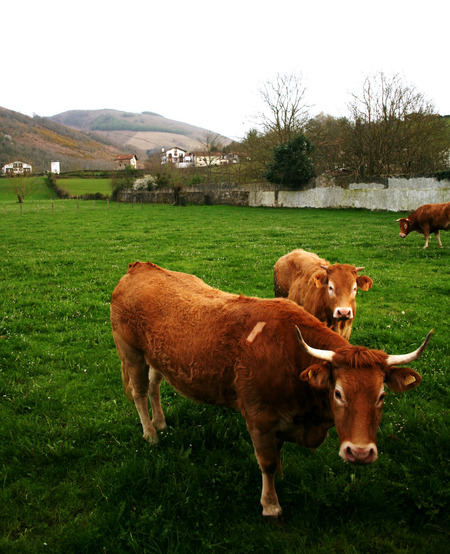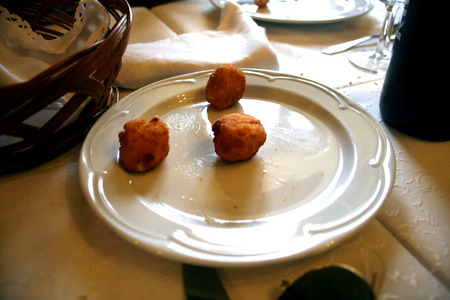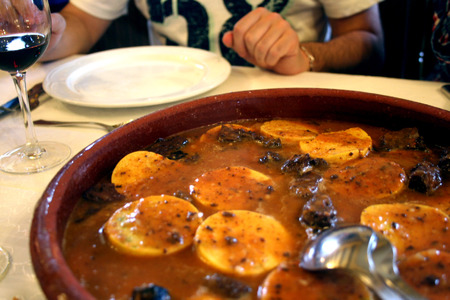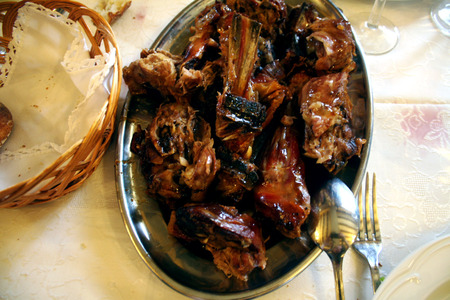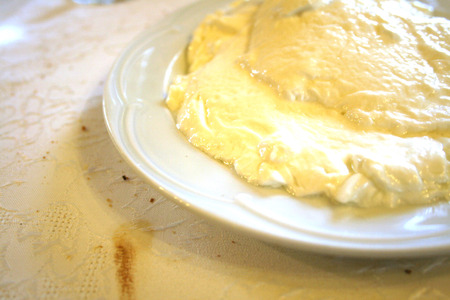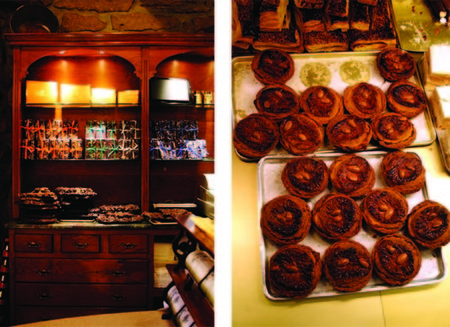vamos: valle de baztán, navarra
Yesterday we took a trip to Navarra, the neighboring province that is part of Euskal Herria (what Basque people call Basque Country). It was a trip with one motive and one motive only: eat a lot of lamb. Gathering at what is an early hour on a Saturday, we made our way through the incredible northern Navarran landscape to the valley of Baztán.
We started our tour at the national park of Bertíz, with a beautiful garden and hikes through the mountains surrounding the valley. Then we got down to the real business of the day: lunch. Baztán is known for its lamb and we dined accordingly in restaurant Galartza, the spot for lamb and for Txuri ta Beltz. It's housed in a small cottage-like building in nearby Elizondo, with a standard dining room of dark wood and cozy lighting. Some cheese and ham croquetas were devoured.
A shot of the first plate:
If you think it looks like plain old bread, well, you're pretty close. But it is bread that has been soaked in a meat stew, and it has a name: busti or baztan zopak. And maybe it was created just for me and my love for mushy carbohydrates. Despite being the most simple dish, it was probably the one that sparked the most intellectual debate; did you know soggy is a really difficult word to translate?
Conversation, however, quickly died with the introduction of the meal's star, txuri ta beltz.
Txuri ta beltz means 'white and black' in Basque. People have been eating this dish in this tiny area for as long as memory serves. It consists of a 'sausage' (the txuri) made with egg and lamb intestine, and then chunks of lamb blood and usually onion (the beltz). Seriously good, and had me racking my brain for anything remotely similar that I've ever eaten. My (also Southern) dining partner and I both separately thought of grits, for no discernible reason.
Then five silver platters. Five mounds of incredibly moist lamb.
And this was our dessert, a heaping plate of....curd? It's called gaztanberas, and it's virtually identical to the very typical dessert, cuajada. It has a burnt wood taste, which comes from the days when it was first invented, prepared by cooking over flame in wooden pots. The burnt taste would be transferred to the final product, and eventually became a desirable part of the dessert's flavor.
And because this was a trip with a bunch of gluttons, it wasn't sufficient to end it with merely the end of a three-hour meal. So we sauntered over to the renowned chocolate shop/bakery nearby, Malkorra.
Dark chocolate with hazelnuts is pretty much all you need to know. Even better with milk from Elizondo's local milk machine. Another great day (with GREAT PEOPLE) in northern Spain.
